One of the biggest reasons I planned a trip to Alaska was to see all the Alaska wildlife I had heard about. I learned a lot that I didn’t understand on my visit to Alaska. I went assuming the wildlife would be easy to find but realized there was just as much science to see the animals as luck.
Many animals move with the season. Make sure you are in the right place at the right time.
Animals move with their food source. Climate changes or environmental conditions can change where animals can be found. For example, I visited Icy Point Strait hoping to see the resident humpback whale. It had been an unusually hot summer, which decreased the plankton the water, so he had moved on to better feeding grounds
Take a tour that has gotten good reviews. The guides know where to find the animals. If they don’t find animals, their reviews will be bad, so they put a lot of effort into tracking them for their guests.
Get outside. I saw more wildlife than the other eight people I traveled with. One reason was that I planned more tours. But I also put myself in a position to see as much wildlife as possible. I took every hike, was on deck for every ship ride and on the viewing platform of trains. I often walked around rather than catching a ride.
Where to Find Land Animals in Alaska
Where to Find Salmon in Alaska
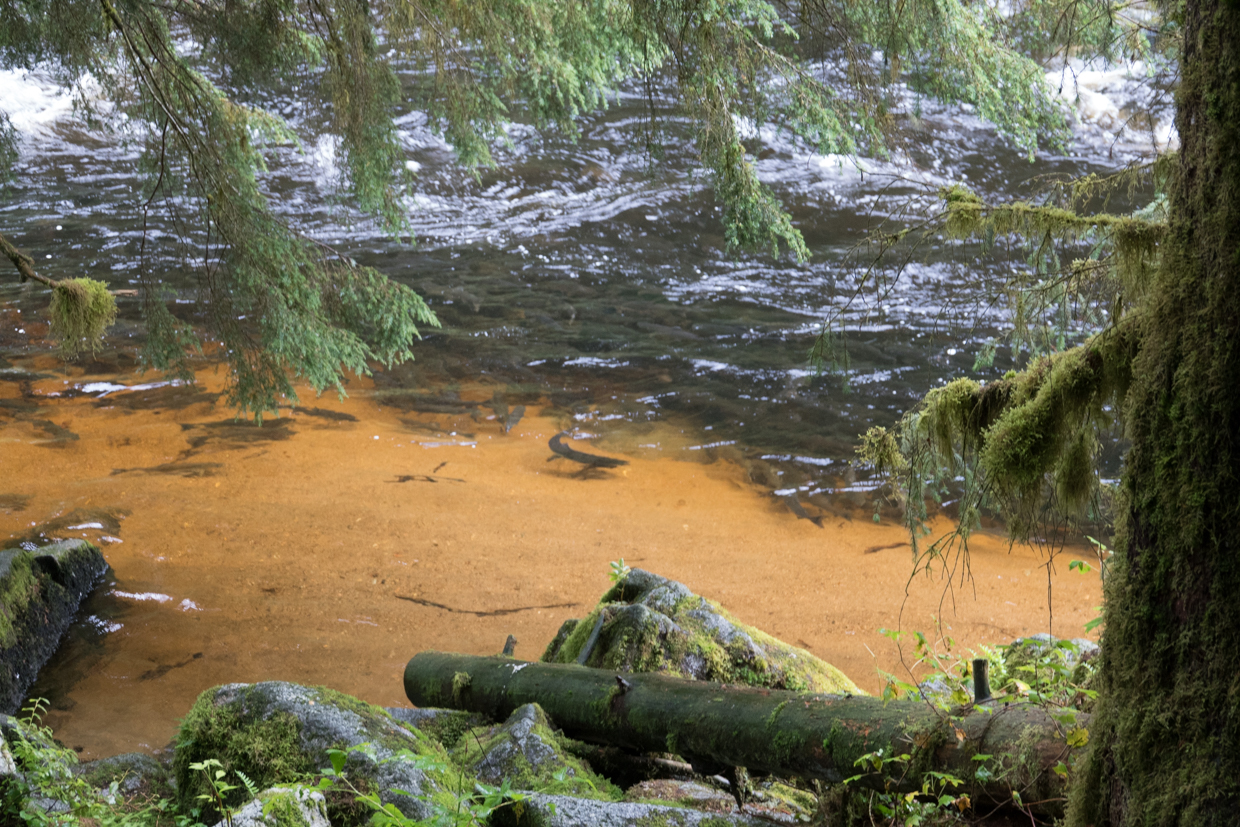
You may not have come to Alaska to see fish, but salmon is a huge key to seeing a few of the animals sure to be on your Alaska animal bucket list- bears and bald eagles. Seeing salmon jump upriver to spawn is a worthwhile endeavor in itself. The salmon in Anan Creek were so plentiful you could not see through them.
Many people do come to Alaska to fish for salmon. Much like most things you will want to do in Alaska, salmon fishing will be more expensive than you expect. Part of the reason for this is that fishing guides need to carry guns to keep you safe from the bear who are also fishing for the same salmon. Search for your perfect salmon fishing excursion.
All salmon are born in freshwater. Depending on the species, they spend different amounts of time living there before they head out to the ocean. They return in a running of the salmon, traveling upsteam, to lay their eggs and start the salmon lifecycle again.
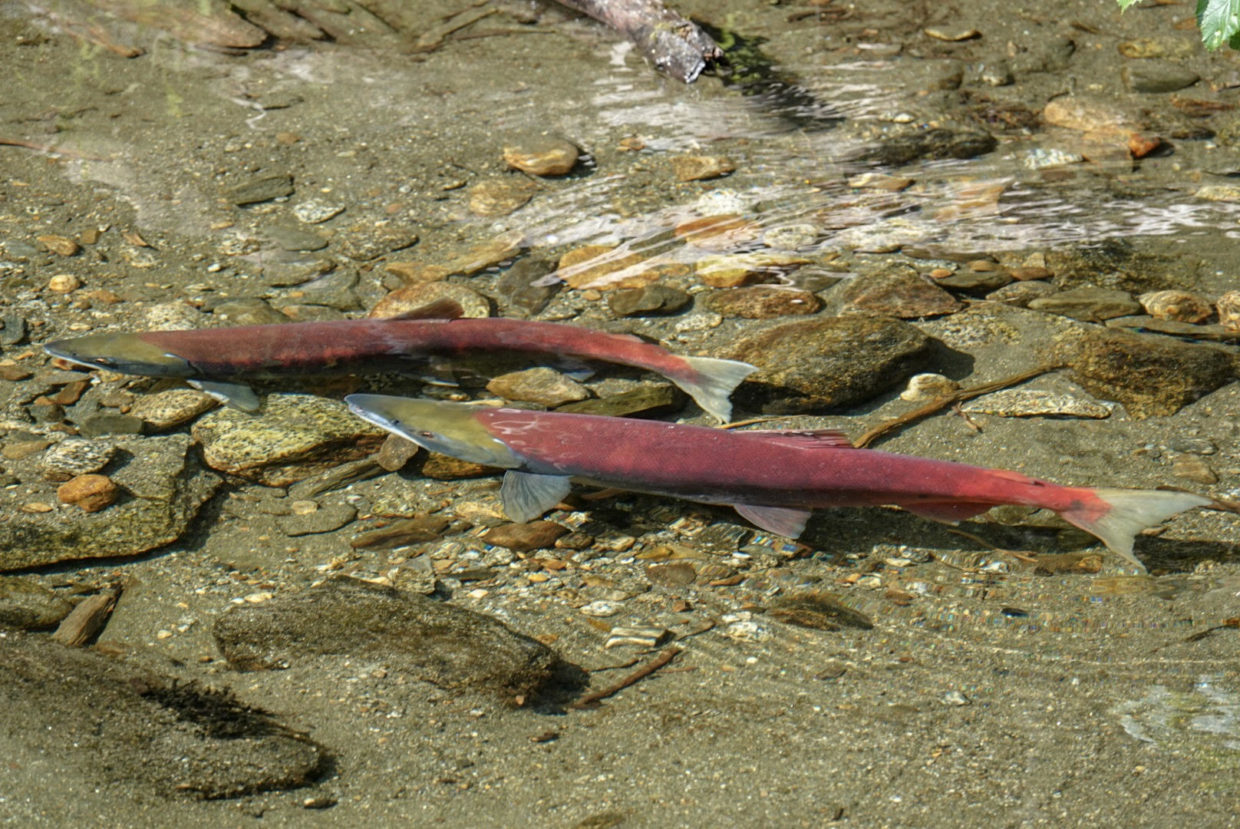
Types of Salmon Found in Alaska and Where to Find Them
Alaska has 5 types of salmon and they all spawn at different times and are concentrated in different places:
- Chum, or dog, salmon: Spawn late July- August. Found throughout Alaska, although generally don’t travel very far upstream. Concentrated in Bristol Bay.
- Sockeye salmon. Spawn June- July. Concentrated around Bristol Bay and its rivers. Also prevalent on the Kenai Peninsula and Kodiak Island.
- Chinook, or king, salmon- Spawn July-August Found throughout Alaska, although most prevalent in Yukon, Kuskokwim, Nushagak, Susitna, Kenai, Copper, Alsek, Taku, and Stikine rivers. Can be found in Ketchikan.
- Pink August- Spawn in September. The largest run of pink salmon in southwestern Alaska is in Anan Creek.
- Coho, or silver, salmon. Spawn September- December. Found most numerously in the Delta Clearwater River.
Where I Found Salmon in Alaska
The most salmon I found traveling around the state from the end of July to the middle of August was in Anan Creek where the salmon were so thick, I thought they were the river until they began jumping out.
There were very few in the Ketchikan salmon ladder, as it was a bit too early.
How to See Bears in Alaska
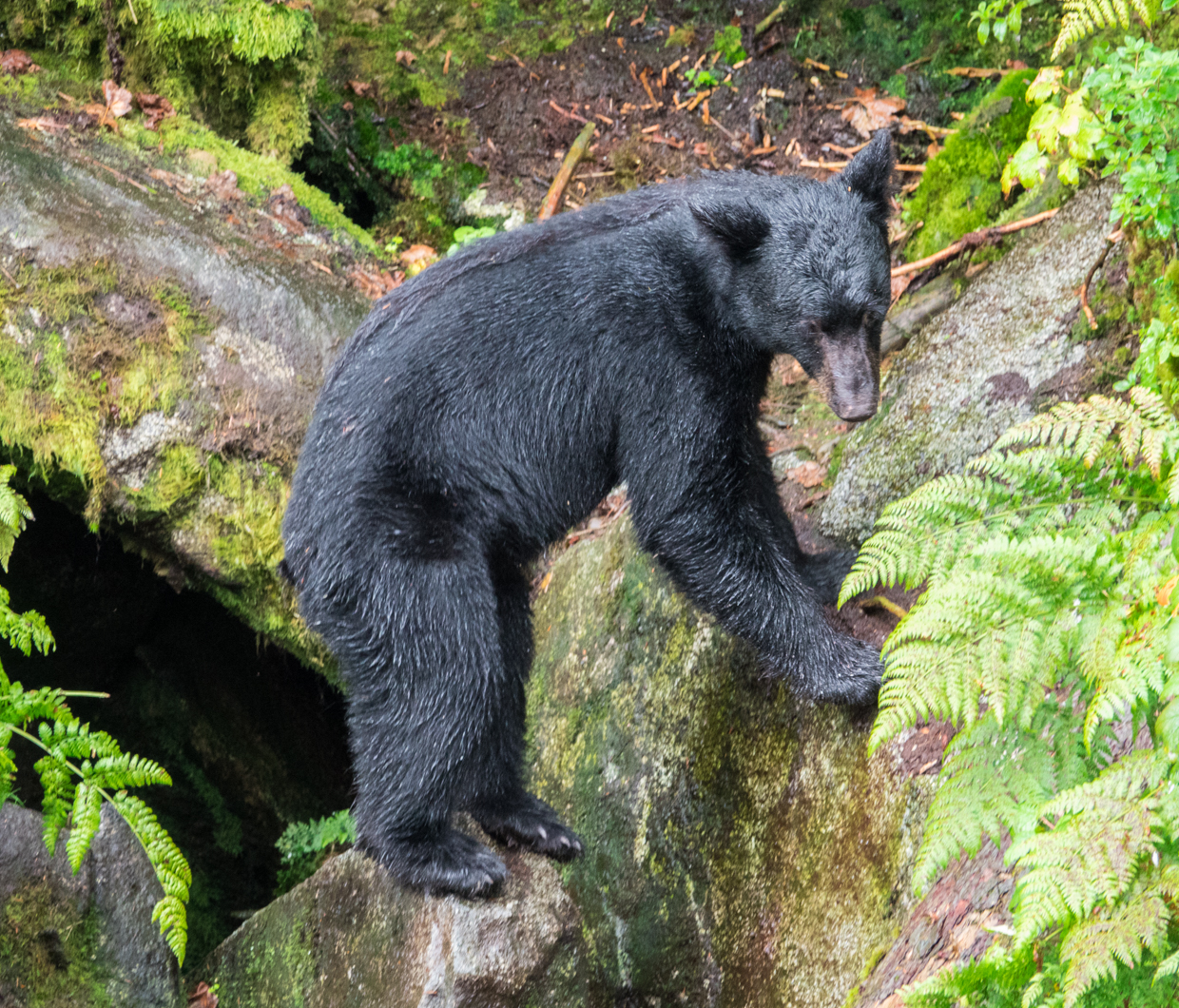
There are three main types of bears in Alaska: black, brown (grizzly) and polar. You can find them easiest where their food source is.
To view bears safely in the wild you should be about 2 football fields away from them, which is pretty far. Read more about bear safety here. In a few places, which I list below, the park services set up observation platforms above bear-rich creeks that allow viewing the bears from much closer.
When to Find Bears in Alaska
Although you can see a bear just randomly ambling through the woods, you are most likely to see one if you find a creek full of salmon and watch them fish. The best time to do this is in late July through early August. Bears are most active around dawn and dusk. They hibernate in the winter.
Where to Find Black Bears in Alaska
Black bears are the smallest of the three Alaskan bears and are found in Alaskan forests. They are not found on the Seward Peninsula, Yukon-Kuskokwim Delta, or north of the Brooks Range, according to the Alaska Department of Fish and Game.
Anan Wildlife Observatory, Wrangell
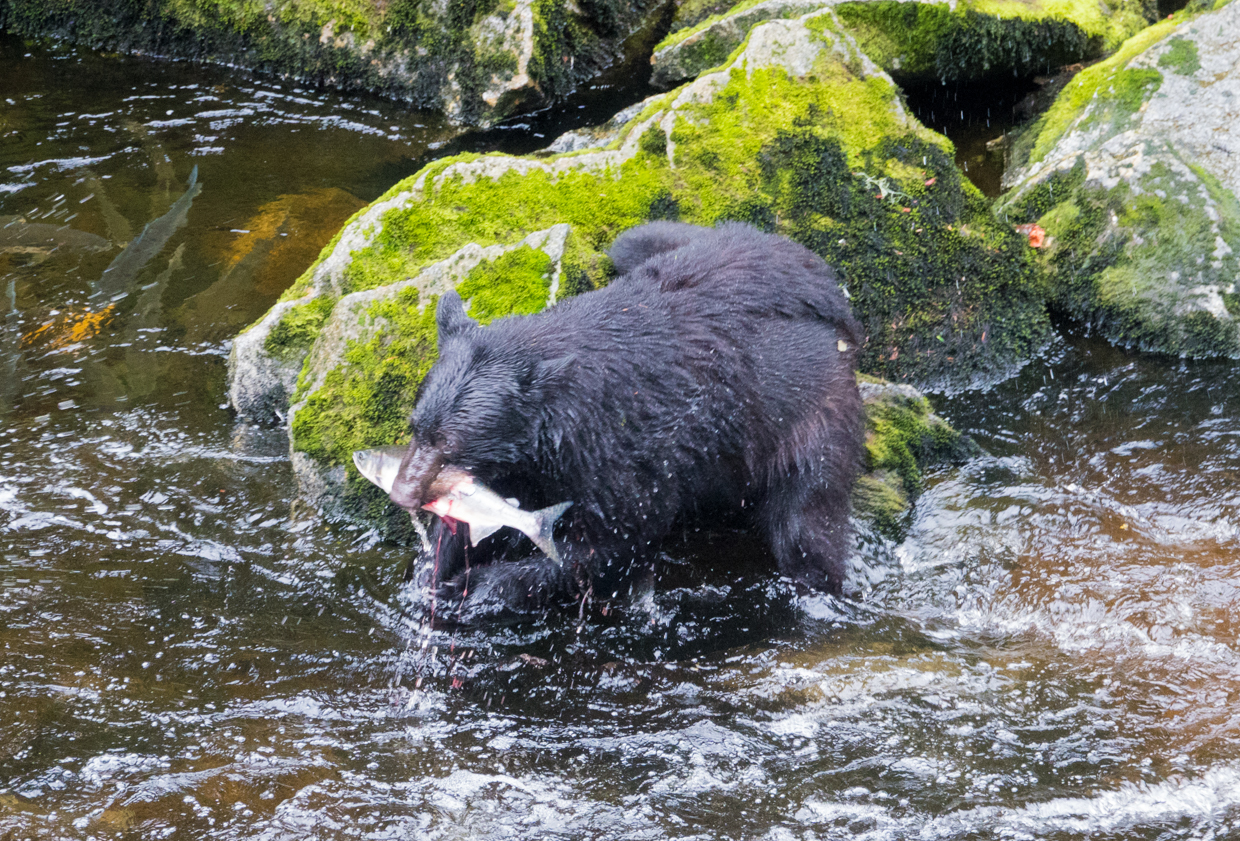
Accessible by floatplane from Ketchikan, the Anan Creek in the Tongass National Forest has the largest pink salmon run in southwest Alaska. The amount of salmon was unreal to me. In my three-hour visit, I saw nine different black bears catch their dinner in the creek. This was one of my best adventures yet, undeniably, and you can read about my whole experience here.
Steep Creek Observation by Mendenhall Glacier
The nicest part about Steep Creek is that it is fairly easily accessible and shares a parking lot with Mendenhall Glacier. All species of salmon pass through here. That being said there were very few fish when we visited. The observation deck will take you on a nice, easy walk through a grassy forest. We did see a black bear and her babies downstream from the observation decks on our way from the city bus to the glacier, but that was just randomly in the stream. Read about my day trip to Steep Creek from Juneau.
Where to Find Brown Bears in Alaska
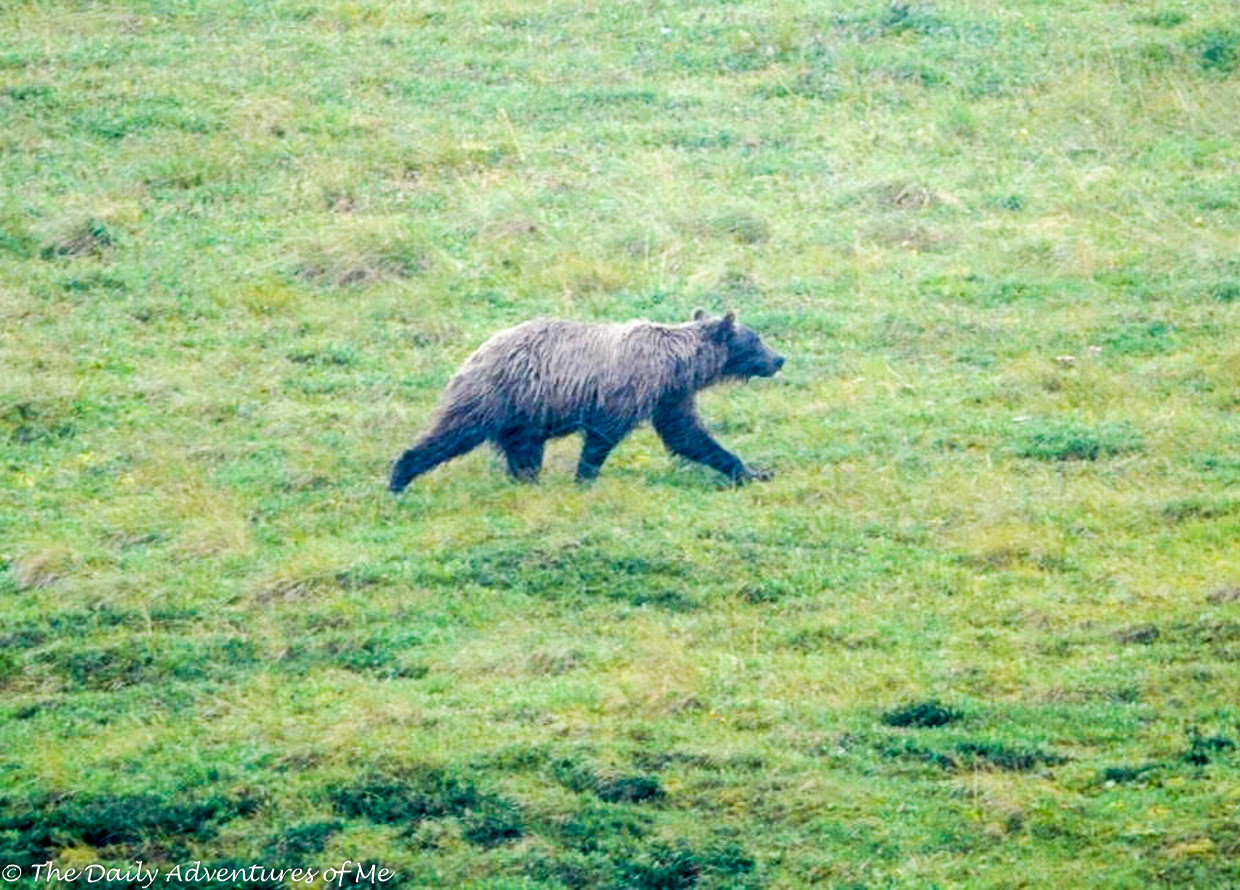
Brown, grizzly and kodiak bears are all the same species, so are considered together. Brown bears live near the shorelines, grizzlies inland and kodiak bears live on the Kodiak Archipelago. I saw my grizzly just ambling along a mountainside on a bus tour of Denali National Park.
Brooks Falls, Katmai National Park & Preserve
This was actually my first choice to visit when I was in my Alaskan trip planning stages. Every review I have read says there are a lot of bears to see here. It was sold out and more expensive than Anan.
Book your day tour to Brooks Falls here.
Where and When to Find Polar Bears in Alaska
Polar bears live in the northern polar region along Alaska’s northern coast. In the summer, you have to be extremely north to encounter them. We visited Barrow, Alaska to see if we could catch a glimpse of these impressive, but fierce creatures. You can read about our epic trip to Barrow, which was a highlight of our trip. Although we were within 5 miles of one, we did not get to see it. The bears travel with the ice pack and the ice has been last few summers, meaning less summer bears. They are most prevalent in the fall and spring.
Where to See Bald Eagles in Alaska
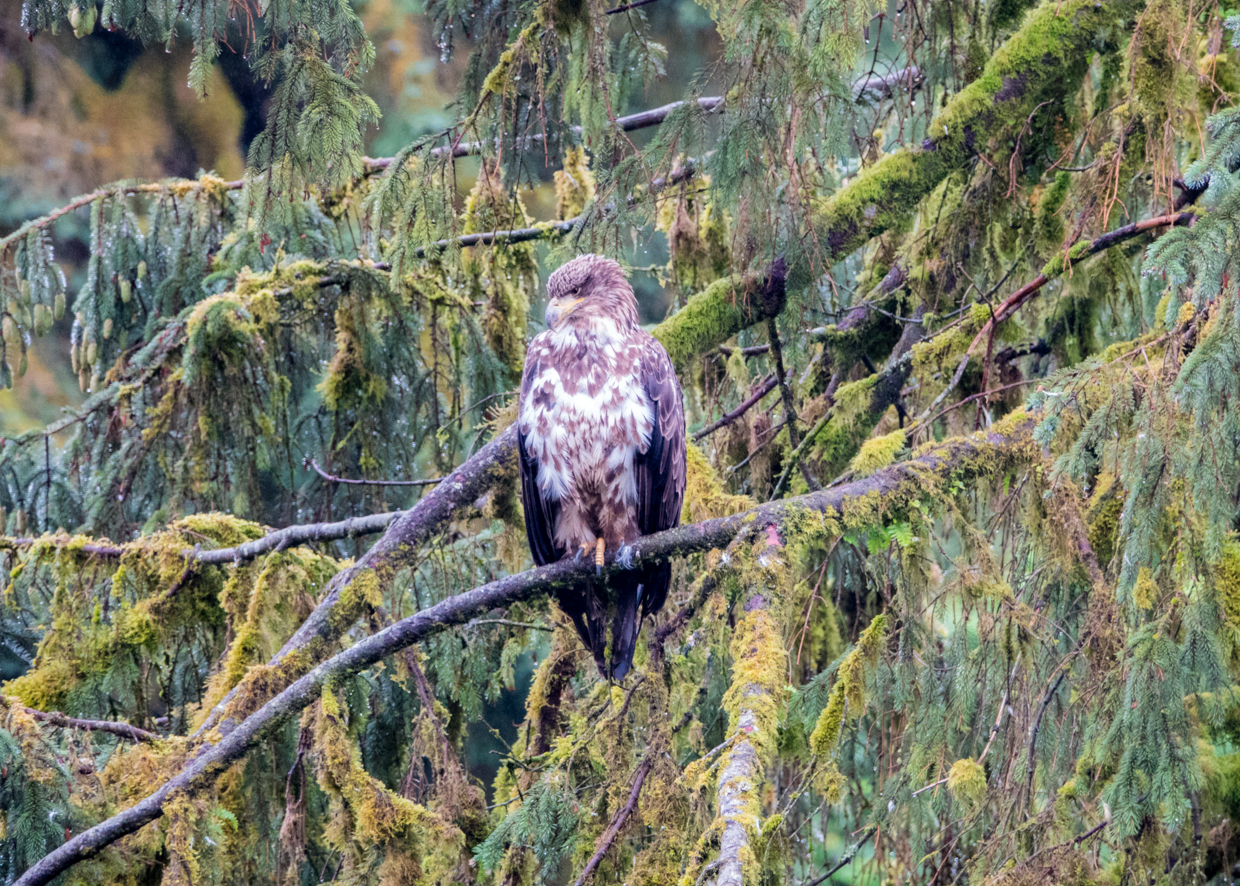
It was incredible to me how many bald eagles are in Alaska. We saw them everywhere we went, except Barrow. They are, of course, more frequently seen in places their favorite food in: bald eagles also follow the salmon! The Tongass Forest was where we saw the most numerous eagles.
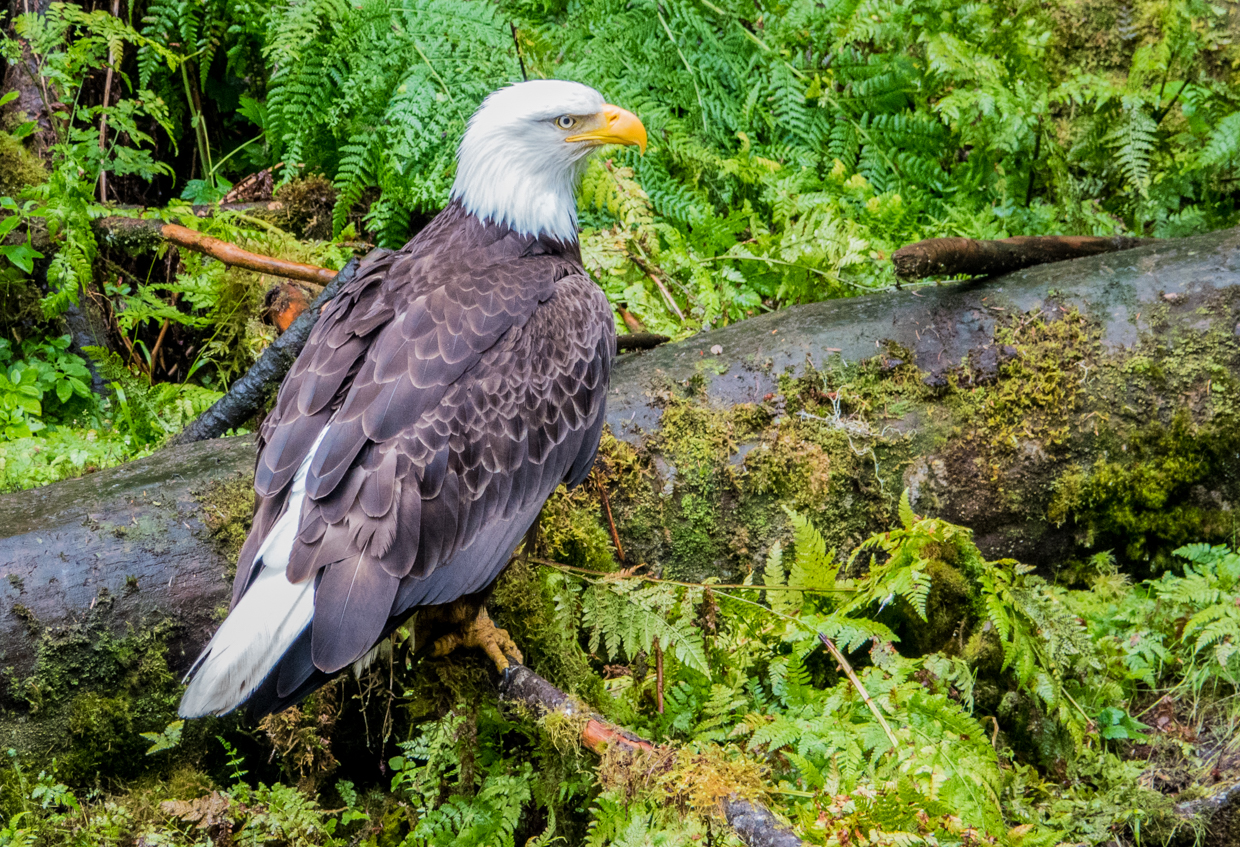
Where to See Caribou in Alaska
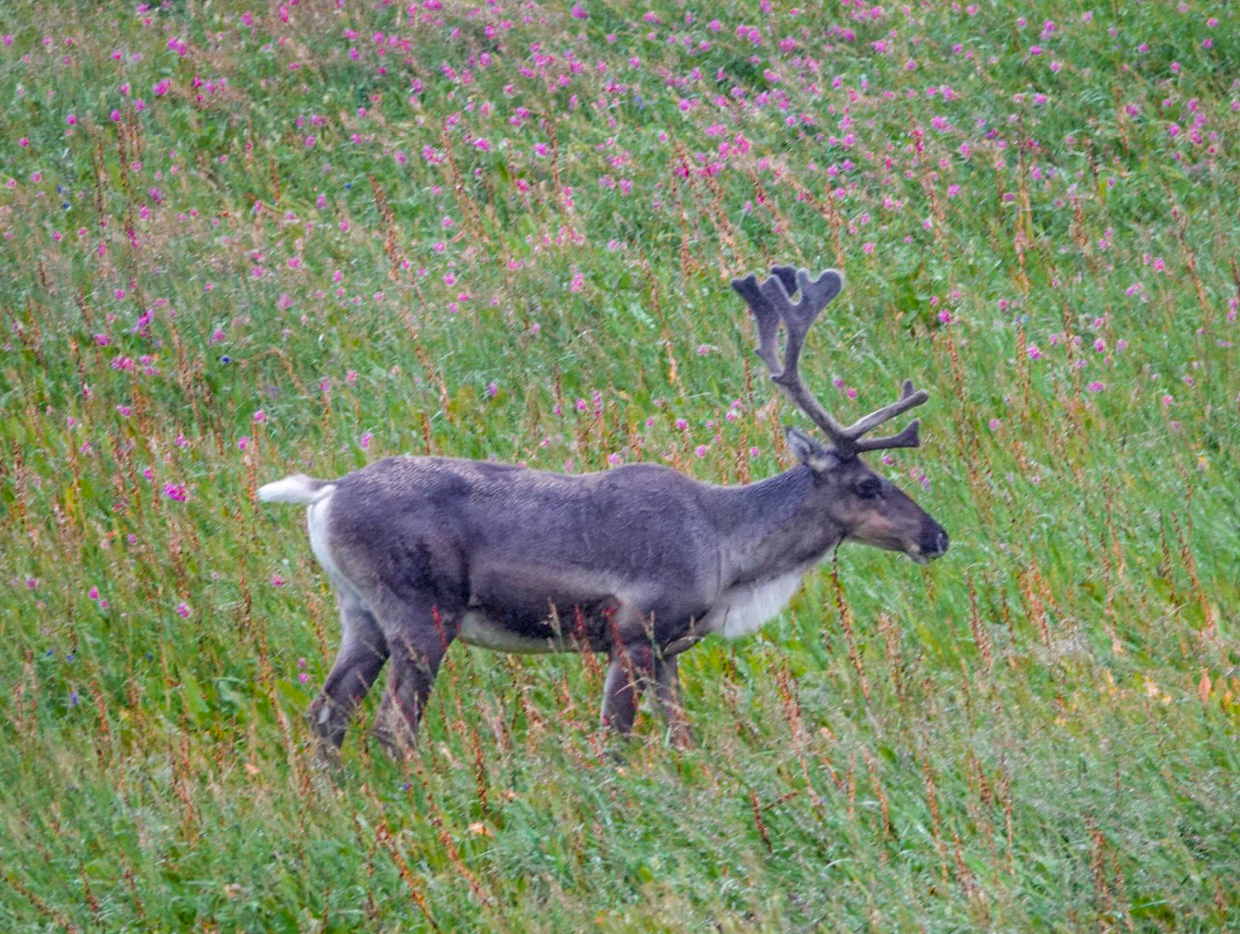
There are both caribou and reindeer in Alaska. They are found in tundra and treeless forest year-round, and in the boreal forests in the winter. In Alaska caribou were never domesticated and reindeer were domesticated. They have wide feet to support themselves on the snow. They are the only deer species in which both sexes have antlers. The antlers are shed after the mating season ends, so if you want to see lots of reindeer with antlers, look for them in the fall.
Where to Find Moose in Alaska
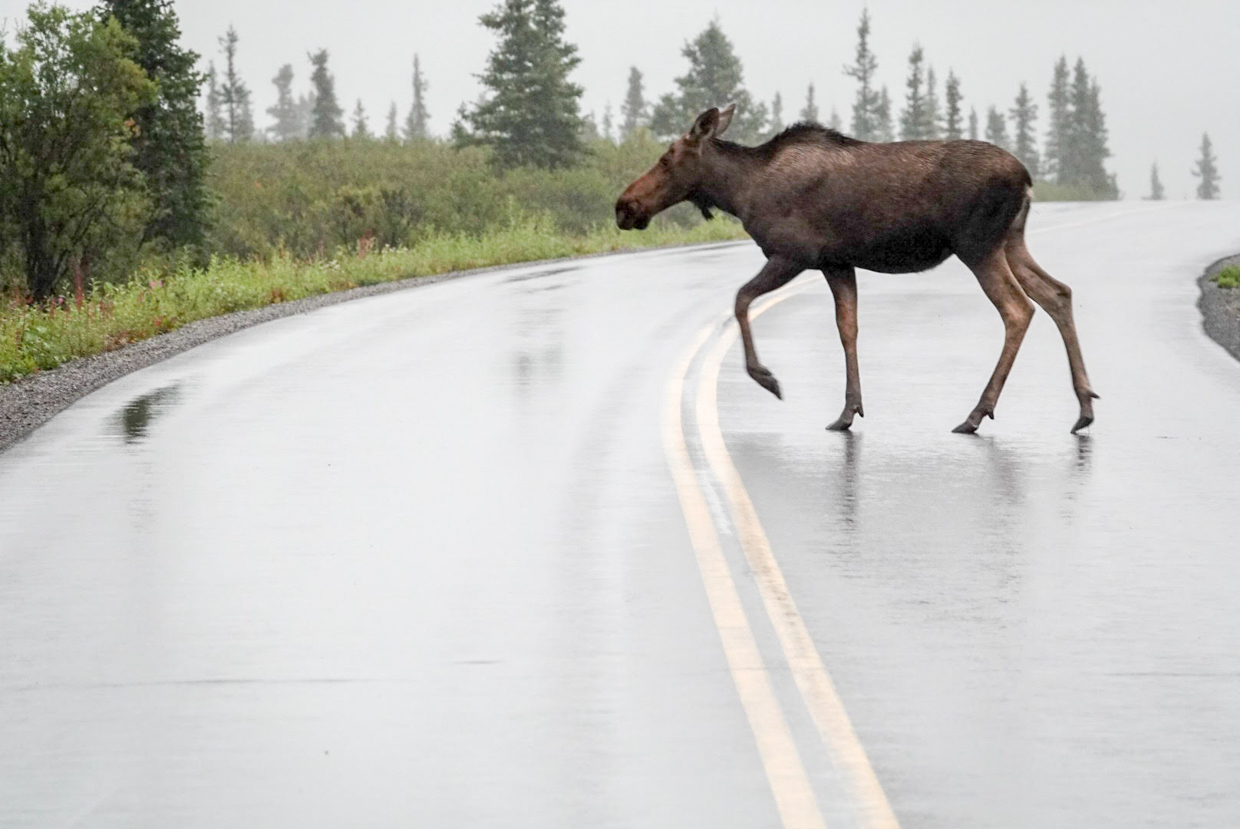
Moose live in forests. I have spent a lot of time in moose country in New England, mainly New Hampshire and Maine and had only seen one moose. While in Alaska for two weeks, I spied moose four times. Three of those times, I saw a moose cow and her calf. All of those times were on roads or right on the side of roads and all were in Alaska’s interior. We did not see any while we were on the cruise, even while on excursions.
Moose live in forests throughout Alaska. They are the largest member of the deer family and only males have antlers. They are well-adapted to feed in swamps, so that is also a good place to look for them.
The Rest of Denali’s Big Five
The big five animals in Denali National Park are the moose, grizzly bear, wolf, Dall Sheep and caribou.
In our one day in Denali, we did get to see Dall Sheep but did not get to see a wolf. The park actually became a National Park because of these sheep. Charles Sheldon, a naturalist, lobbied congress for its status to protect these unique sheep from hunting. Dall Sheep are mountain climbers. They can be seen as little white dots high up on the mountains inside of the park.
Denali also has red fox, snowy hares and pheasant.
How to Find Sea Animals in Alaska
Sea Otters in Alaska
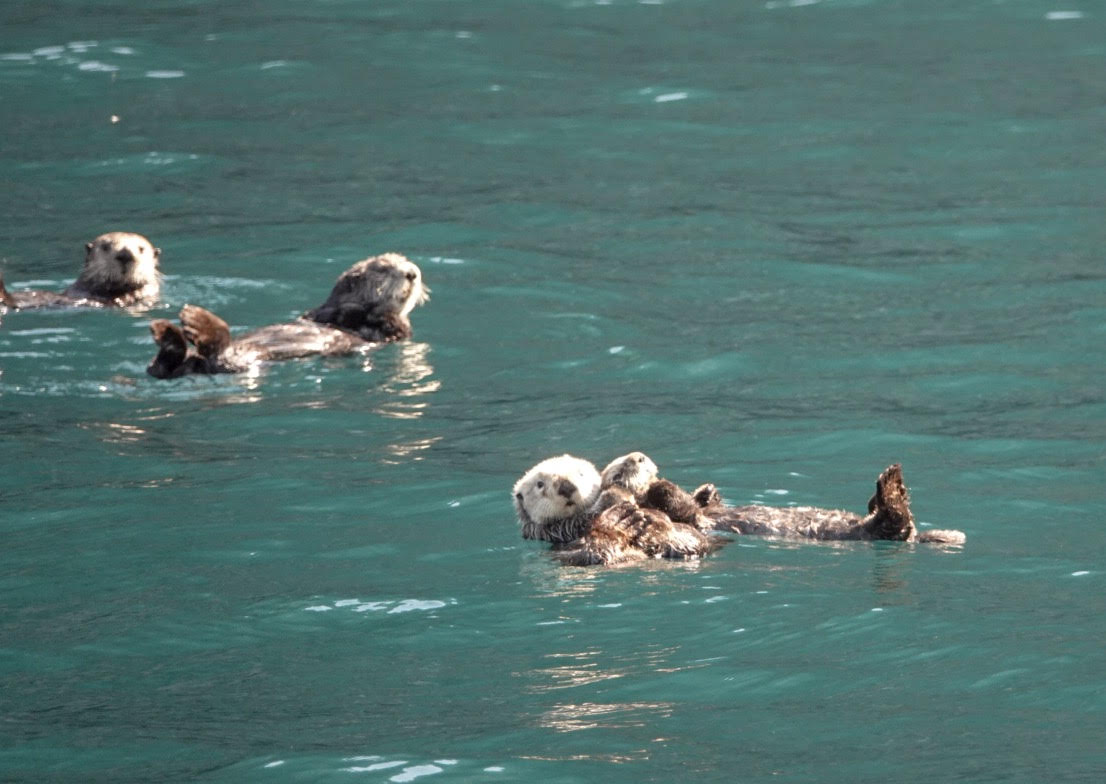
Sea otters can be seen in southern Alaska. They can be seen right off the coast of Seward. We saw this family in a little cove off an island on our Kenai Fjords cruise.
Where to See Whales in Alaska
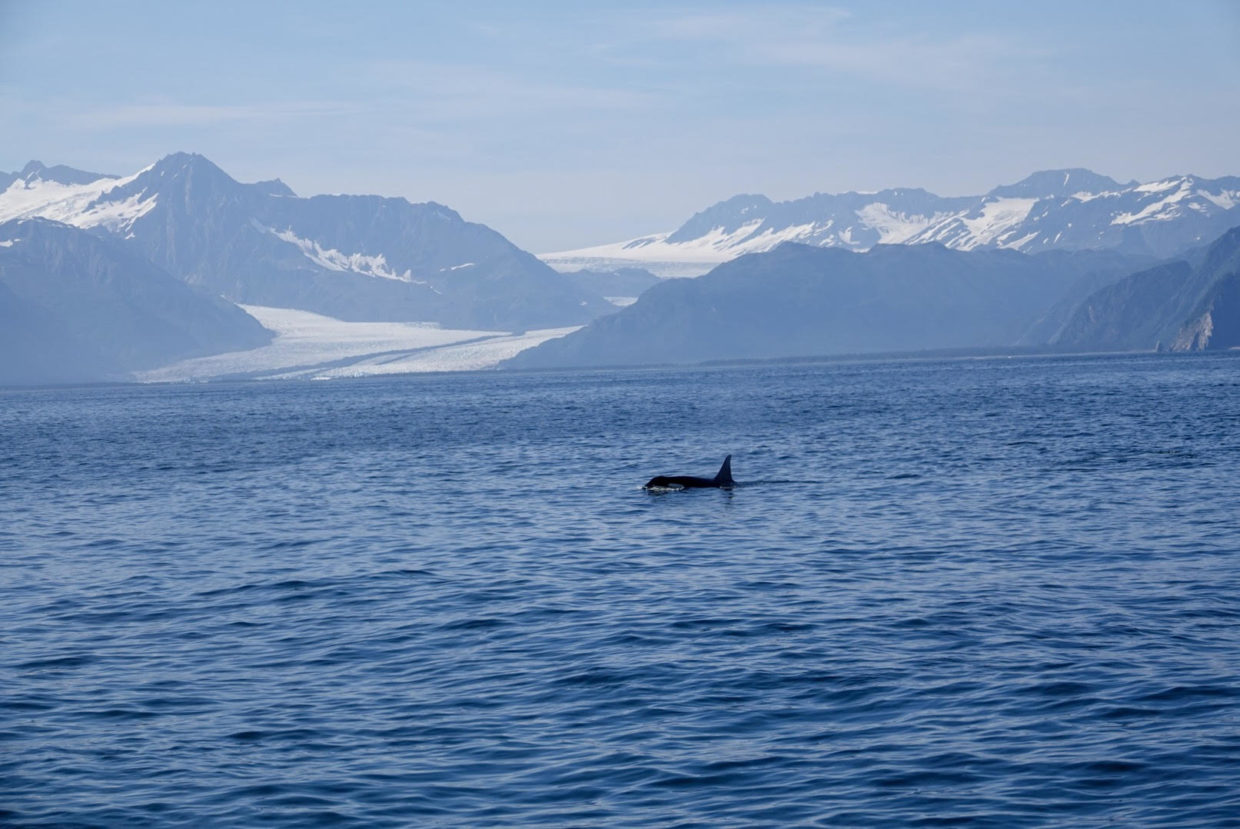
Whales also follow their food source. Here are the whales, dolphins and porpoises found in Alaska and when they can be seen. You definitely want to book a tour and get out on a boat to see them. The captains communicate with each other and will find animals for you to see if they are around.
- Orca (killer) whales can be found around Prince William Sound all year long. They eat fish and love salmon, so will follow them. We saw a pod in the waters off of Seward with our Major Marine half-day tour.
- Humpbacks migrate through during May-September. They can be found in the Inside Passage and pretty much everywhere in Alaska. One had been hanging in the bay at Icy Point Strait when we were there in late July, but a warm spell drove him into deeper water looking for food when we visited.
- Beluga whales migrate through the Turnagain Arm, just south of Anchorage in late summer. We were just a few days ahead of them when we took the Alaskan Railroad from Seward to Anchorage. They can also be found in the Cook Inlet and the Arctic Ocean off the coast of Barrow.
- Bowhead whales come near the shore of Barrow in spring and fall, when they are hunted by the natives.
- Grey whales can be found passing by on their way up from California to the Bering Sea for summer feeding. They are most numerous around the Kenai Peninsula and Kodiak areas during May. Sometimes the eating is so good, they stay in southern Alaska.
- Blue, fin, sei, minke and sperm whales can be found in the Inside Passage and are best seen by whale watch.
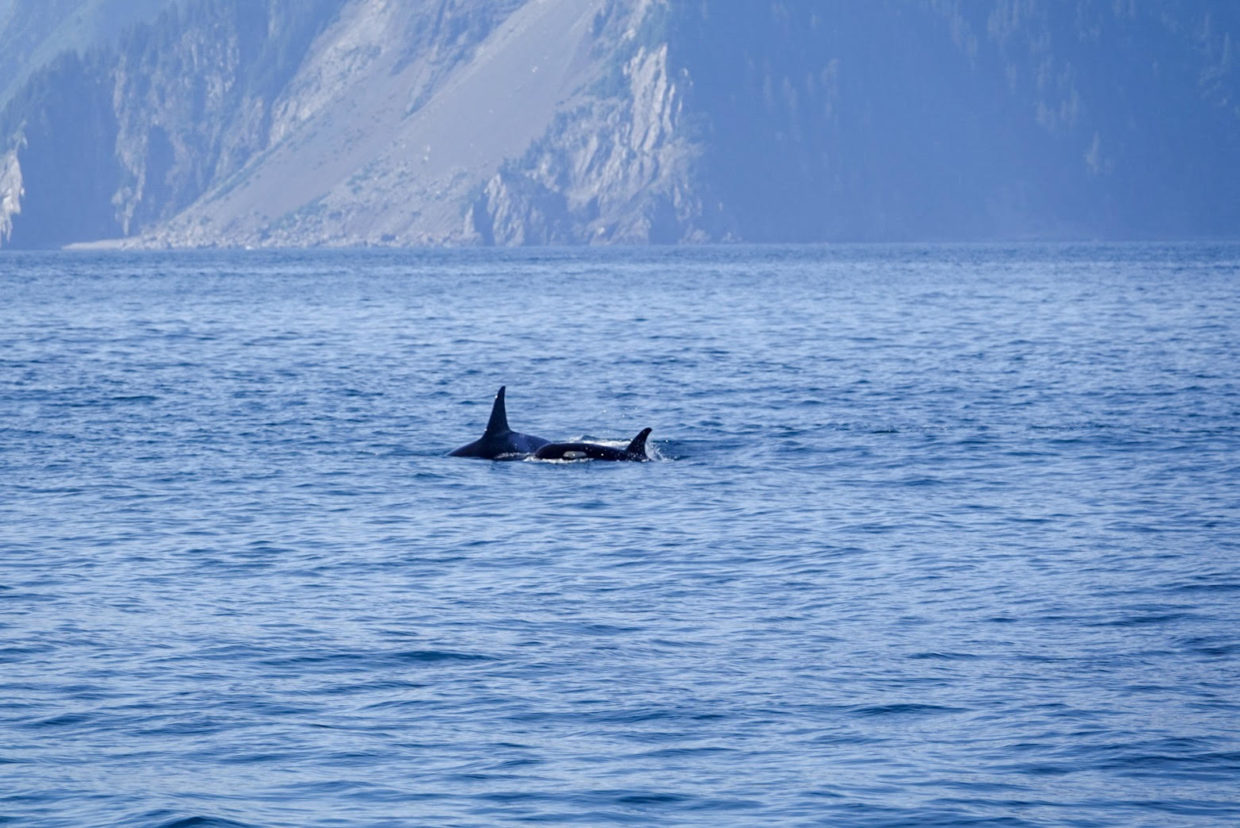
- For the smaller cetaceans, you can find Dall’s porpoise, harbor porpoise, and Pacific white-sided dolphins. I first saw a Dall’s porpoise while walking the path into Hoonah from Icy Point Strait. If you don’t know about them you swear you are seeing a small killer whale; their markings are so similar.
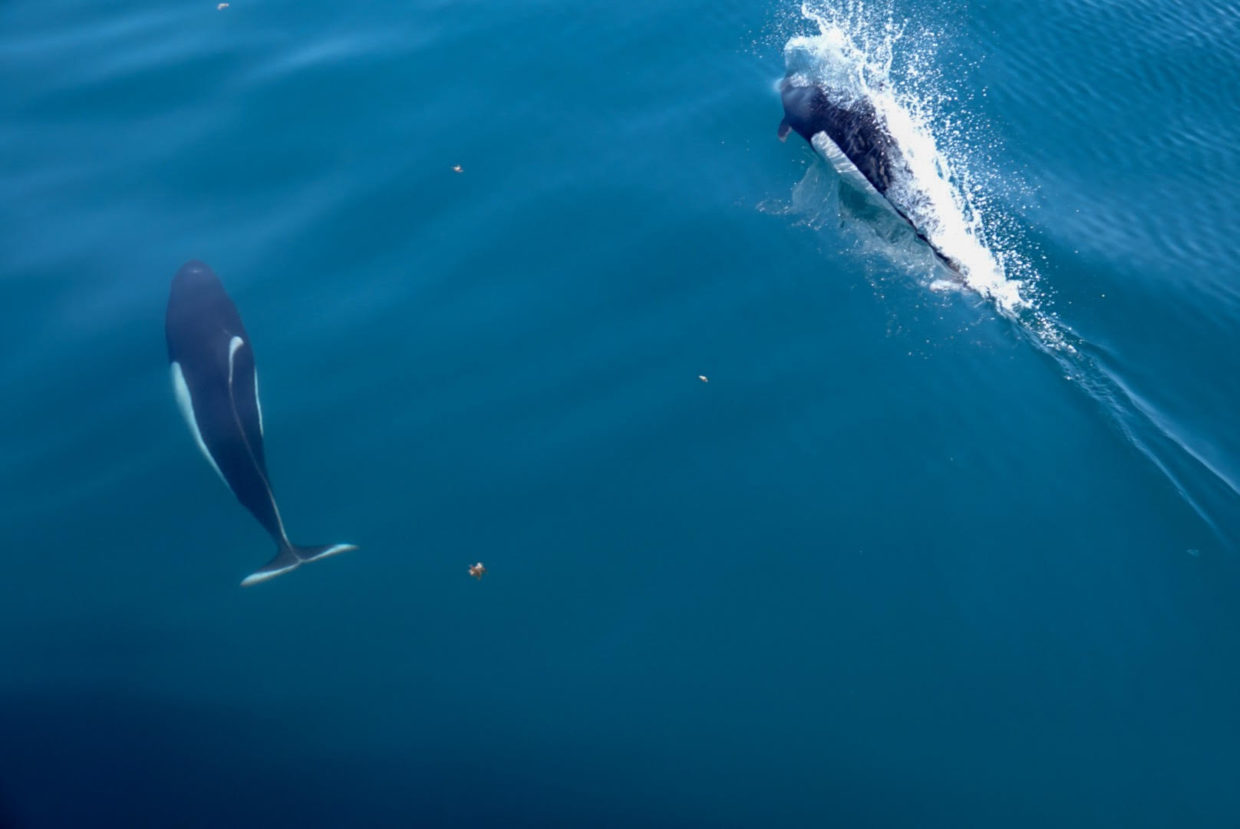
Where to Find Puffins in Alaska
I did not see any puffins on my own, but when I got out onto the water around Seward they were everywhere! Did you know that puffins can fly? They are also much smaller than I expected.
A major thing that I learned about birds in Alaska on my visit is that they look very different throughout the year. They remain conspicuously decorated except in mating season when they grow magnificent colors. Many animals in Alaska also turn white to hide in the winter.
Puffins come in from the ocean to mate and give birth in the summer. The mating happens May to June in southern Alaska. At this time they will be their most colorful. So, if you want to see puffins colored as you expect in pictures, visit in the early summer. They give birth in the rocky rookeries on the coastline around July and August. At this time you can also see them bobbing along in the ocean or flying over its waters.
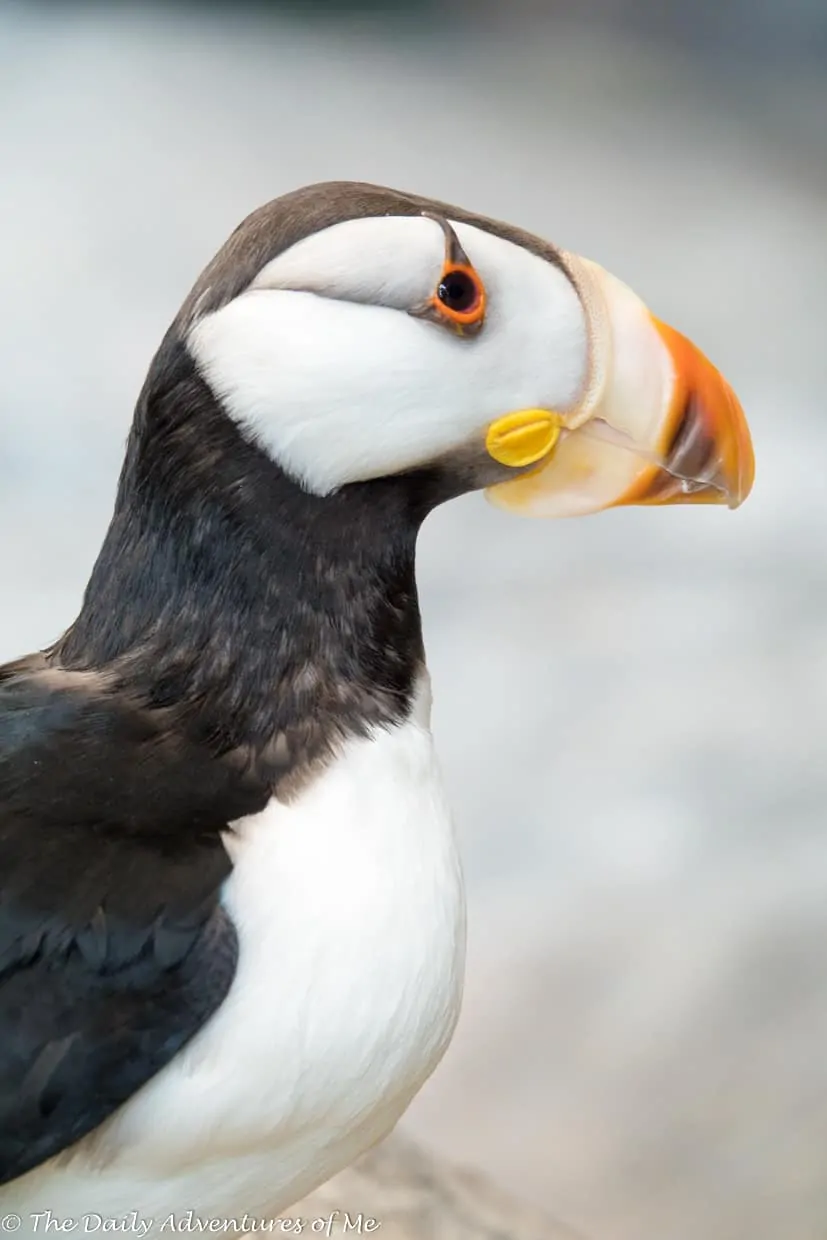
Seals and Sea Lions
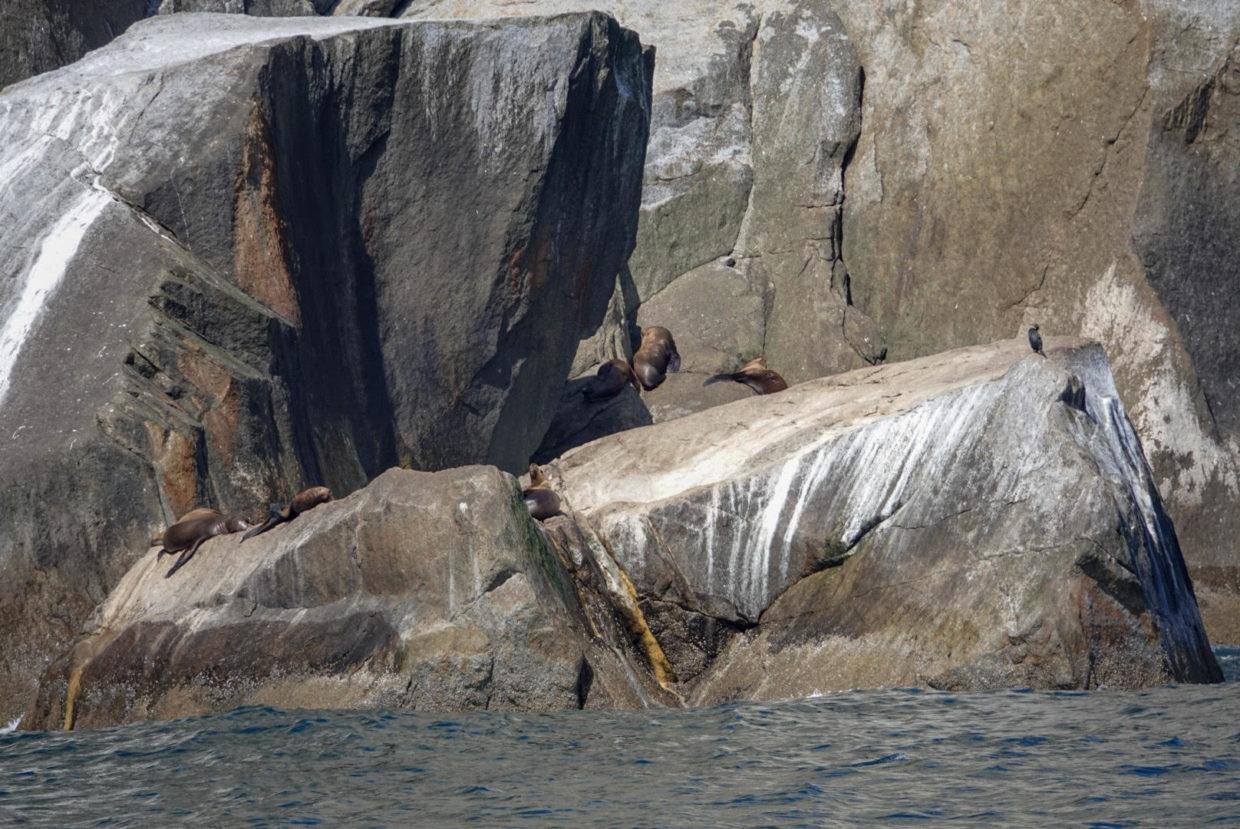
Sea lions and seals can be seen along Alaska’s coastline.
What Kind of Camera do you Need to Catch Pictures of Alaskan Wildlife?
In my travel buying guide, I go further into camera detail. If you want to get good pictures of wildlife, you need to have a camera with a good zoom. If you do that through a fancy camera, the zoom lens tends to be very long and heavy. Unless I am traveling just to take pictures, I require a smaller, more portable camera. On this trip, I took my Sony Cyber-Shot RX-10 IV which I bought for this trip. It was the perfect camera for my needs. If you don’t want to blow pictures up, another easy option is anything in the Sony a6000 series with a zoom lens. (the larger numbers).
Which Alaskan animals are highest on your bucket list? What was your best Alaska wildlife sighting? Let me know in the comments.
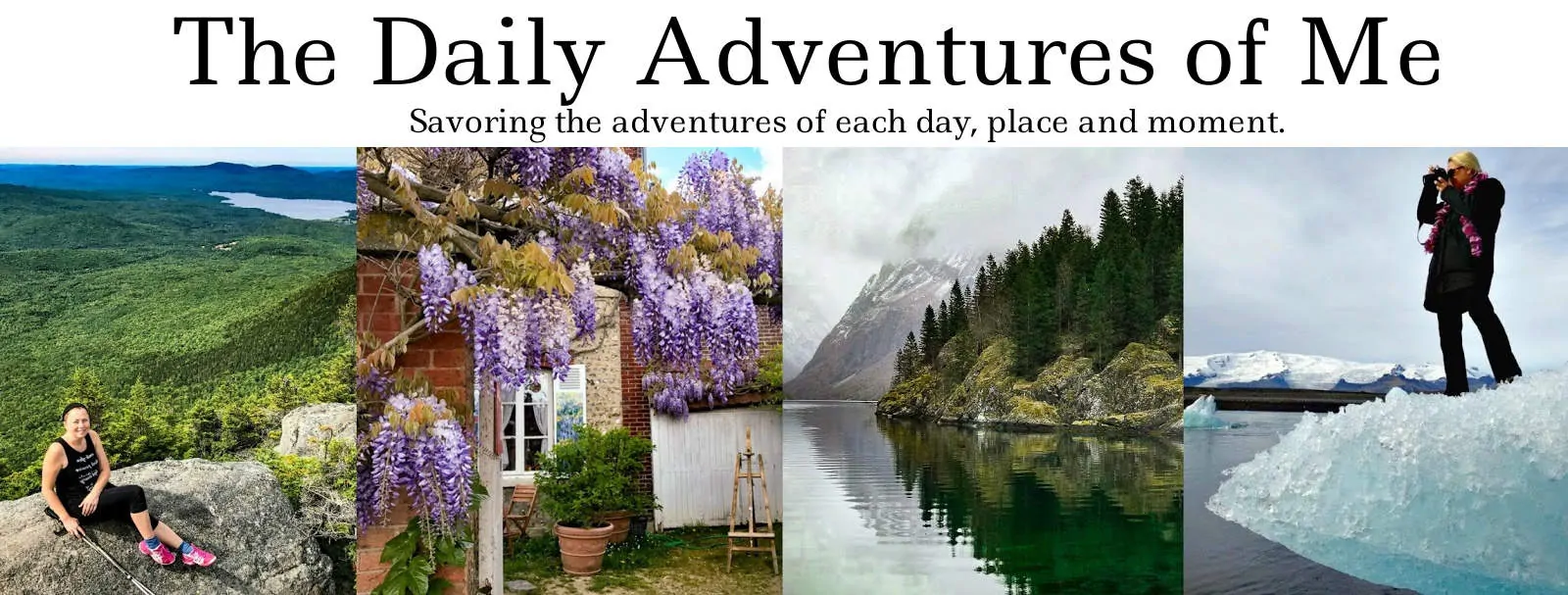
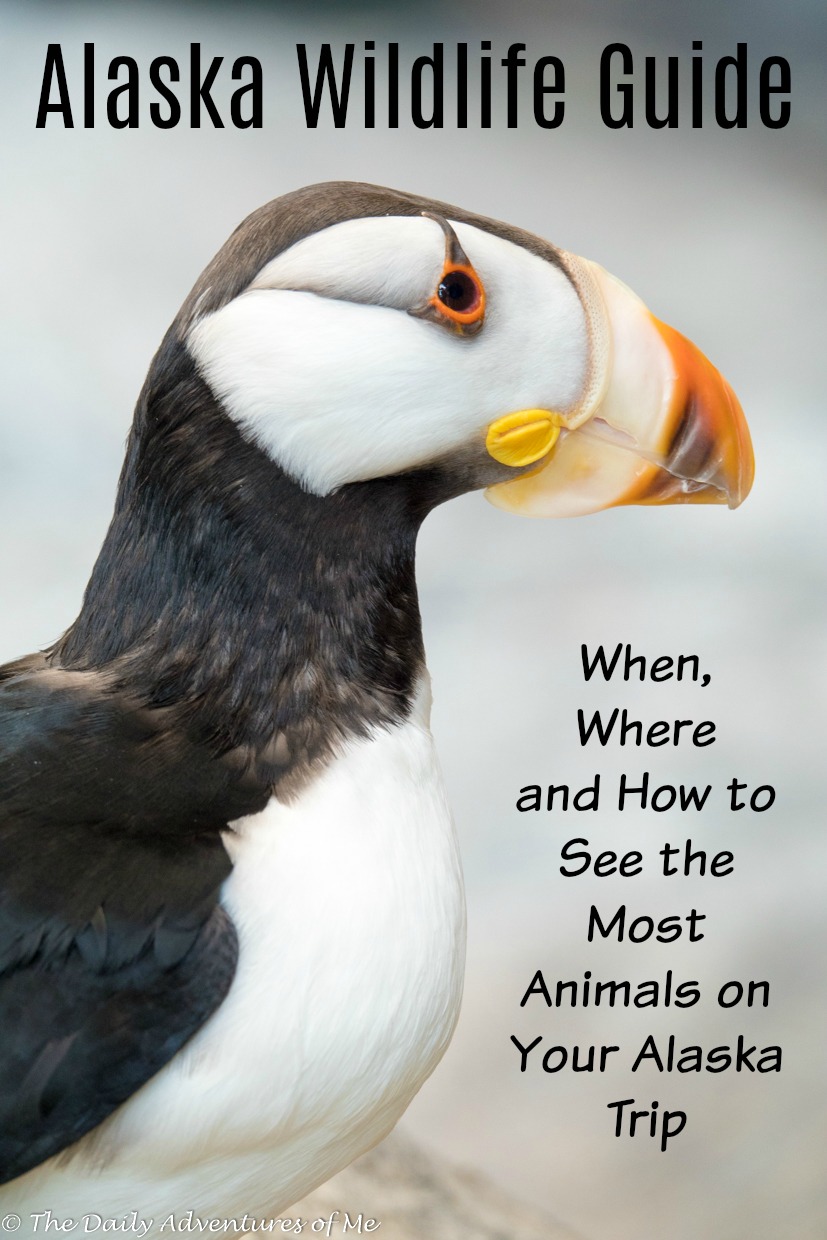
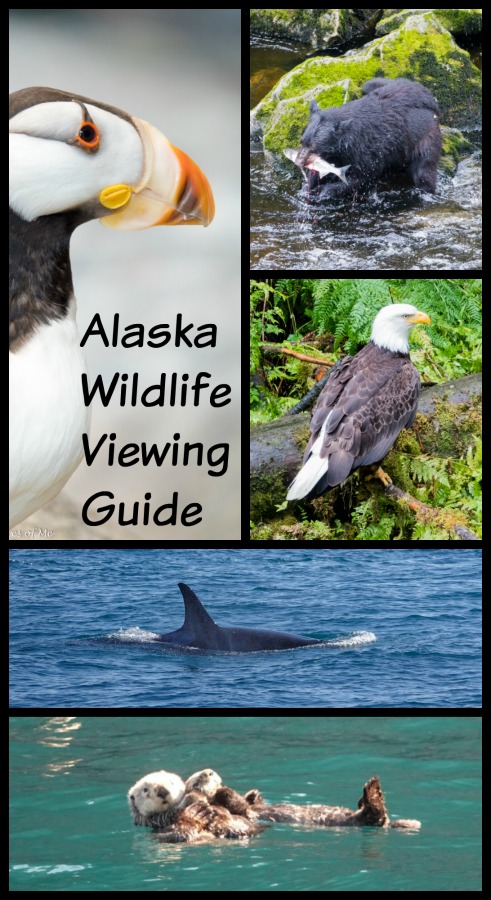
Oh my goodness, we loved these animal photos so much! What an awesome trip! Thanks for the great tips!
Thanks, Crysta.
We could spend all day watching sea otters!! Thanks for all the info. We seem to repel wildlife, so maybe this will help. 😉
This was definitely the first time I didn’t feel like I repelled wildlife as well.